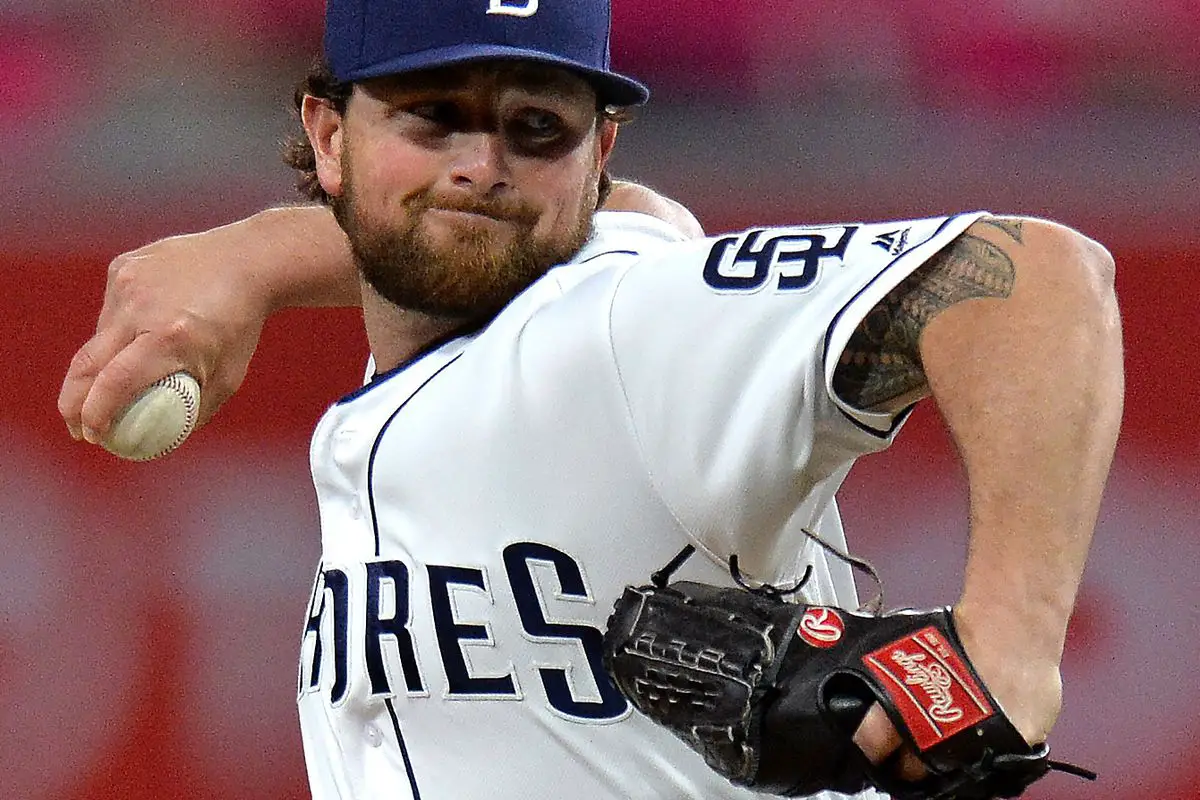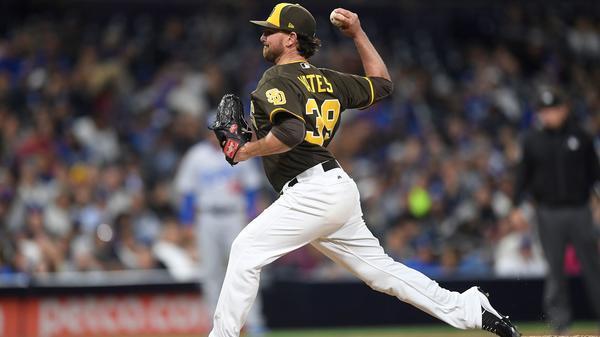Padres 40-Man Roster Rankings: #13 Kirby Yates

Credit: AP Photo

Background
With a name like Kirby, how could you not like Kirby Yates? After originally being drafted out of high school by the Boston Red Sox in the 2005 MLB Draft, Yates decided to go to school instead. A Tommy John surgery caused Yates to miss the entirety of the 2006 and 2007 seasons, and the right-hander went undrafted in the 2009 MLB Draft. However, the Tampa Bay Rays signed the undrafted free agent and sent him to rookie ball in 2009.
In hindsight, that looked like a pretty solid decision, as Yates posted a 2.39 ERA and 49 to 8 strikeout to walk ratio in 26 and a third innings that year. He followed that with most of the next season in Low-A ball, posting a 3.30 ERA. However, his strikeout to walk rate took a big hit, as Yates walked nearly half as many batters as he struck out (41 walks with 97 strikeouts). Interestingly enough, Yates threw over 90 innings that year, as he made 12 starts out of his 27 total appearances. Despite having some success in that role, that was the last time Yates was seriously tried as a starter.
Following stellar showings in 2011 (1.62 ERA in 33 and a third innings in High-A) and 2012 (2.65 ERA in 68 innings in Double-A), Yates had the most impressive season of his career in Triple-A in 2013. Not only did Yates’ ERA fall back below 2.00 in 61 and two-thirds innings, but he also posted one of the best strikeout to walk rates of his career (93 to 23). From 2011 to 2013, Yates strikeout rate raised from 32.9 to 33 to 37.4 percent while his walk rate fell from 16.1 to 13.7 to 9.2 percent. Suddenly, Yates was looking like an elite-level relief prospect.
Yates found even more Triple-A success at the start of the 2014 season, posting a 0.36 ERA in 25 innings before earning a big league call-up. Over his first 36 big league innings, Yates posted a solid 3.75 ERA, although he did see his strikeout rate fall by around 10 percentage points from where it was in Triple-A. Yates also found himself being hit a little more often, but his walk rate was similar to where it was at in the minors.
This is where Yates’ story takes a bit of a turn, as he was absolutely dreadful in 2015, posting a 5.33 ERA in 25 and a third Triple-A innings, and an even worse 7.97 ERA in just over 20 big league innings. Despite some improvements in his walk rate, Yates strikeout rate fell slightly, and his batting average against climbed significantly. Following the season, the Rays designated Yates for assignment, and promptly traded him to the Cleveland Indians. Less than two months later, Yates was once again designated for assignment, and this time traded to the New York Yankees.
After re-finding some magic in 16 and two-thirds Triple-A innings, Yates spent the majority of the 2016 season pitching in New York. In 41 and a third innings, Yates posted a 5.23 ERA, although his 3.97 FIP looked a lot better. The biggest thing that stands out is his .340 BABIP, which was nearly a .100 points higher than his last season in Tampa Bay. Following the season, Yates was once again placed on waivers, and this time claimed by the Los Angeles Angels.
2017 Performance
After being placed on waivers and claimed many times over, Yates was once again designated for assignment on April 2, 2017, and outrighted from the roster and sent to Triple-A three days later. Yates threw seven innings in Triple-A before getting called up to the big leagues, striking out 14, walking three, and posting a 2.57 ERA. Yates would throw one big league inning for the Angels before once again being designated for assignment on April 23. In total, Yates has been designated for assignment five times.
On April 26, Yates was claimed on waivers by the San Diego Padres. In 55 and two-thirds innings in 2017, Yates looked like he finally found his stride, as he posted a 3.50 FIP with a 38.5 percent strikeout rate and 8.4 percent walk rate. After years of toiling on the rosters of various American League teams, things seemed to finally click for Yates in San Diego in 2017. He looks to build off that success in 2018.
2018 Projection and Long-Term Outlook
Steamer: 55 innings, 11.29 K/9, 3.52 BB/9, 3.57 ERA, 3.57 FIP, 0.6 fWAR
ZIPS: 58 innings, 12.88 K/9, 3.57 BB/9, 3.57 ERA, 3.66 FIP, 0.5 fWAR
Both Steamer and ZIPS project Yates to see a slight regression in both his strikeout and walk rates, but he projects to post similar ERA and FIP numbers to his 2017 season. The 2018 season might be a big chance for Yates to take another step forward and further cement himself as one of the most important pieces in the Padres’ bullpen. Including this year, Yates is under control for the next three years, so he arguably could be a part of the bullpen as the Padres’ transition into being a more competitive team. On the flip side, Yates could be another valuable trade commodity if all goes well for him this next year. So far, Yates has been yet another waiver wire success story for the A.J. Preller-led San Diego Padres.
Editorial and Prospect Writer for East Village Times. Twenty-five years young, Patrick has lived in San Diego for his entire life and has been a Padres fan nearly as long. Patrick lives for baseball and is always looking to learn new things about the game he loves through advanced stats.